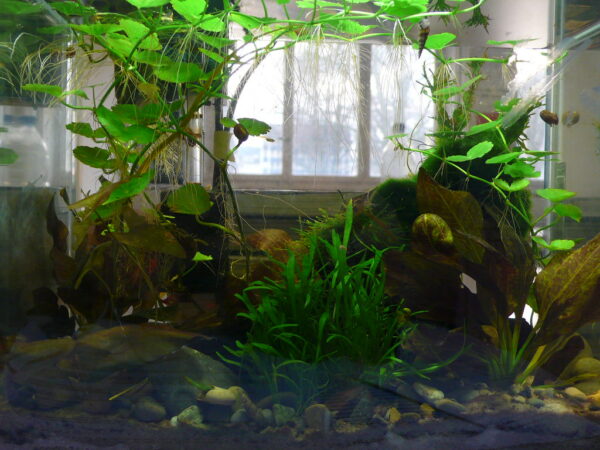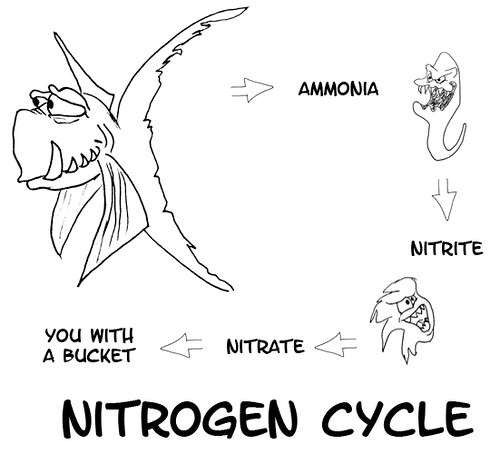Aquarium nitrates are the bane of many an saltwater and freshwater aquariums. But there are some quick and easy fixes to remove nitrate from aquarium water.
What is Nitrate?
Nitrate (NO3-) is a chemical compound that contains nitrogen and oxygen. It is a common component of the nitrogen cycle in aquariums and is produced as a result of the biological breakdown of organic matter, fish waste, and uneaten food. Elevated nitrate levels can be harmful to aquarium fish and other aquatic organisms.
How to Lower Nitrate in Aquariums
Reducing nitrate levels in your aquarium is essential for maintaining water quality. Here are some effective methods to lower nitrate levels:
Use Live Aquarium Plants for Nitrate Removal
Live aquarium plants can help reduce nitrate levels by absorbing nitrate as a nutrient. They contribute to a natural and balanced ecosystem in your tank. Include a variety of aquatic plants to maximize nitrate removal.

Nitrate Removing Liquid
Nitrate-removing liquid products are available in the aquarium market. These products contain chemicals that convert nitrate into a less harmful form or facilitate its removal through water changes. Follow the manufacturer's instructions when using them.
Nitrate Removing Filter Media
Certain filter media, such as nitrate-removing resins or granules, can be added to your filtration system. These media work by adsorbing nitrate from the water as it passes through the filter. Regularly replace or regenerate the media as needed.
Nitrate Removing Sponges
Nitrate-removing sponges are specialized filter sponges designed to reduce nitrate levels in your aquarium. They work similarly to filter media, trapping and removing nitrate from the water. Replace these sponges as they become saturated.
Feed Less Fish Food, Stock Fewer Aquarium Fish
One of the primary sources of nitrate in aquariums is overfeeding and having an excessive fish population. Feeding your fish an appropriate amount of food and maintaining an adequate stocking level can help reduce nitrate production.
Perform Routine Water Changes
Regular water changes are a fundamental aspect of aquarium maintenance. They help dilute nitrate concentrations and remove other pollutants from the water. Aim for routine water changes as part of your aquarium care routine.
Use a Protein Skimmer
Protein skimmers are primarily used in marine aquariums but can also be beneficial in freshwater setups. They help remove organic waste and dissolved organic compounds, which can contribute to nitrate production.
Add Items that Support Anaerobic Bacteria Growth
Anaerobic bacteria are beneficial microorganisms that thrive in low-oxygen environments. Introducing items like deep sand beds or denitrifying filter media can create anaerobic zones where these bacteria can convert nitrate into nitrogen gas, effectively removing it from the aquarium.

FAQs
- What are the safe levels of nitrates in a fish tank?
- Safe nitrate levels are typically below 20 ppm, but this can vary depending on the species of fish.
- How often should I test my aquarium water for nitrates?
- It's recommended to test your water at least once a week.
- Can high nitrates cause algae growth?
- Yes, high nitrates can contribute to excessive algae growth in the aquarium.
- Are there any fish that are particularly sensitive to high nitrates?
- Yes, species like discus and certain types of shrimp are more sensitive to high nitrate levels.
- Can I use tap water for water changes?
- Yes, but ensure it is dechlorinated and matches the temperature of your tank water.

